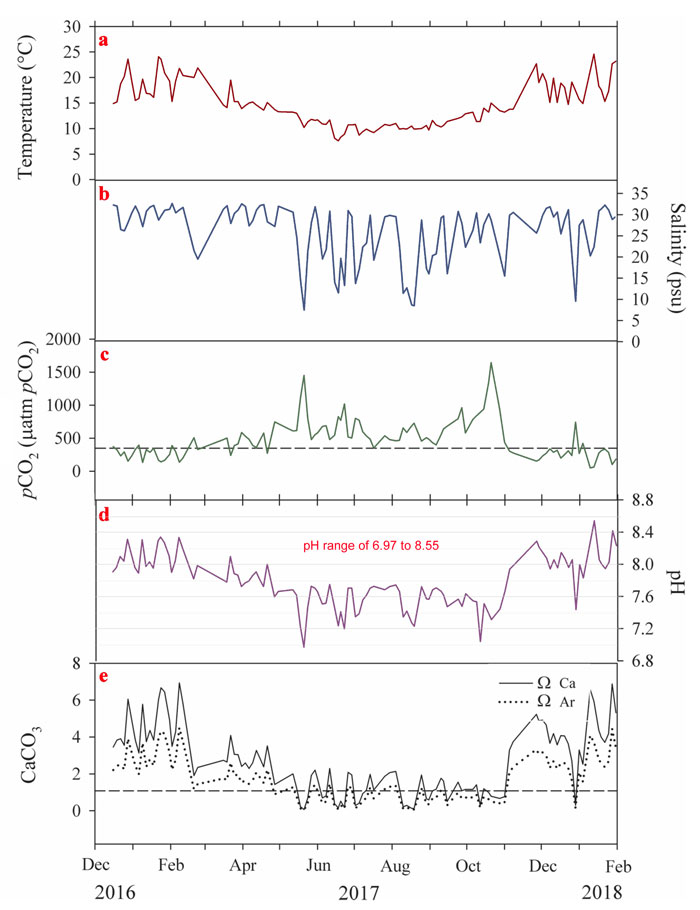| Tweet | Follow @co2science |
Paper Reviewed
Navarro, J.M., Villanueva, P., Rocha, N., Torres, R., Chaparro, O.R., Benítez, S., Andrade-Villagrán, P.V. and Alarcón, E. 2020. Plastic response of the oyster Ostrea chilensis to temperature and pCO2 within the present natural range of variability. PLoS ONE 15: e0234994.
In the words of Navarro et al. (2020), "the combined effects of ocean acidification and other environmental variables remain poorly understood, and in order to predict organisms' responses to a wide range of environmental variability, experiments involving more than one environmental factor are necessary at different time scales and at all levels of biological organization." And thus they proceed to detail the work and findings of just such an analysis they performed on the Chilean oyster (Ostrea chilensis).
The Chilean oyster inhabits estuarine and other coastal areas in the middle to high latitudes of southern Chile and is recognized as a key ecological and economical species in such ecosystems. The object of the authors' study was, specifically, "to investigate the physiological plasticity of Ostrea chilensis in response to temperature and pCO2" so as to "make better predictions about the tolerance range of sensitivity to future climate change conditions [that are] predicted." In all, six environmental treatments were examined for the two predictor variables, three temperatures (10°C, 15°C or 20°C) and two pCO2 concentrations (~400 µatm or ~1000 µatm). Juvenile specimens of the bivalve were examined in full-factorial treatment combinations for a period of 60 days, during which time various physiological measurements were made to determine the individual and combined impacts of the temperature and pCO2 treatments.
And what did those measurements reveal? As noted by Navarro et al., "Ostrea chilensis showed high phenotypic plasticity to respond to the high levels of temperature and pCO2," indicating this bivalve species exhibited "no negative physiological effects." Nevertheless, the authors report that "the highest mean value of scope for growth [(a measurement of the energy available for growth and reproduction)] was found for the 20°C and the high pCO2 treatment." Such a positive finding at the highest temperature and pCO2 value studied in the experiment bodes well for the future of this key marine species.
As for why this organism did not succumb to the dreaded projections of ocean acidification and warming, the authors opine it is likely rooted in phenotypic plasticity acquired from living within its coastal, and more specifically, estuarine environment, which environment is highly variable among multiple growth-related parameters. In this regard, Figure 1 displays reported values for temperature, salinity, pCO2, pH and the saturation state of aragonite and calcite over the period December 2016 through January 2018 within the Quempillén estuary, Southern Chile, where specimens for the experiment were acquired. As shown there, temperatures varied between 7.7 and 25.1°C, salinity between 7.4 and 32.6 psu, pCO2 between ~100 and 1650 µatm, pH between 6.97 and 8.55, while the saturation state of aragonite and calcite both fluctuated between periods above and below saturation. In the words of the authors, "the highly variable conditions of this organism's environment could select for individuals that are more resistant to future scenarios of climate change, mainly to warming and acidification." And that suggests the Chilean oyster has a bright future, which optimism is quite different from the non-stop gloom and doom projections put out non-stop by ocean acidification alarmists.

Figure 1. Time series of temperature (a), salinity (b), pCO2 (c), pH (d) and CaCO3 (e) from Quempillén Estuary, Chile, for the period December 2016 through January 2018. Source: Navarro et al. (2020).




